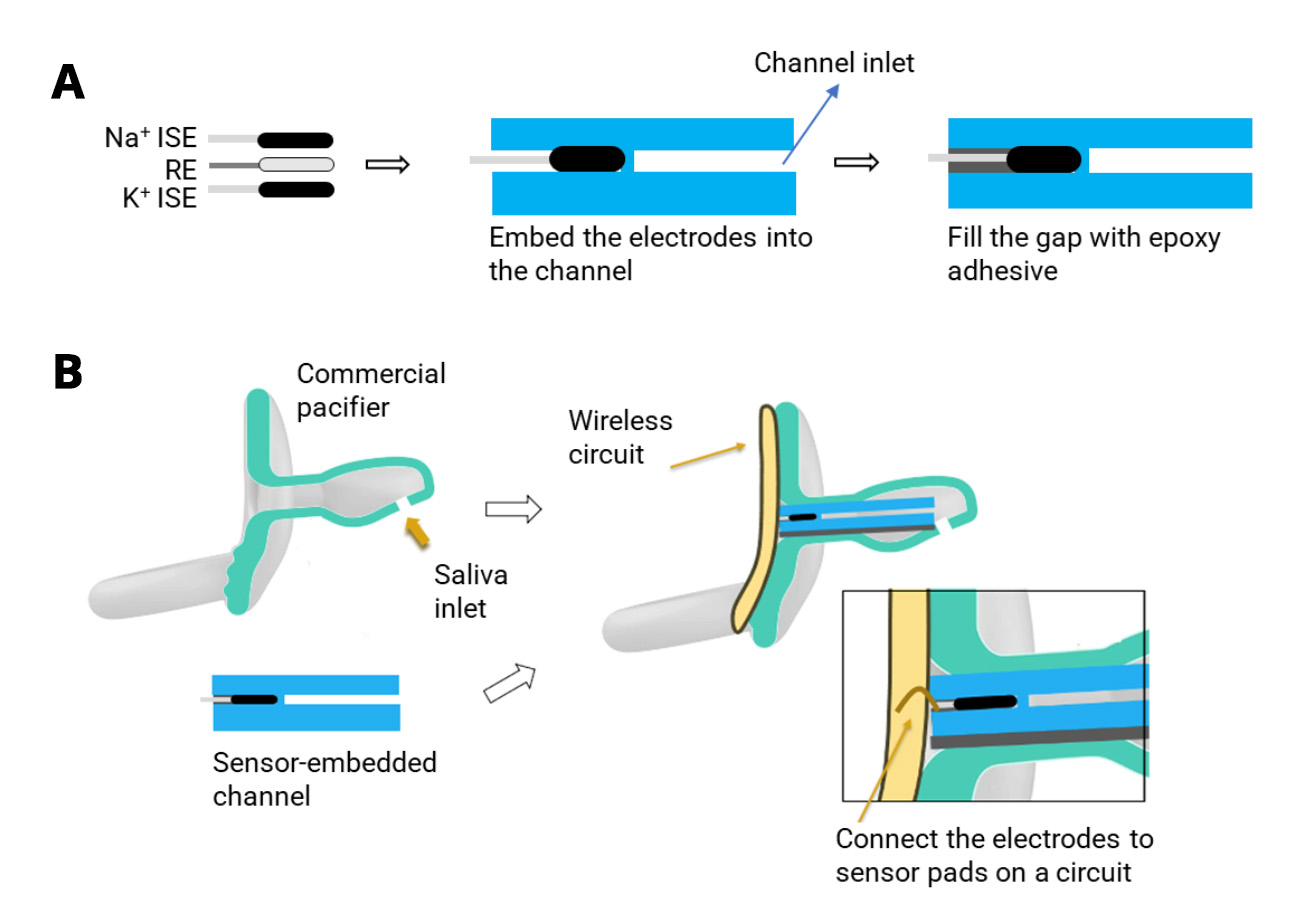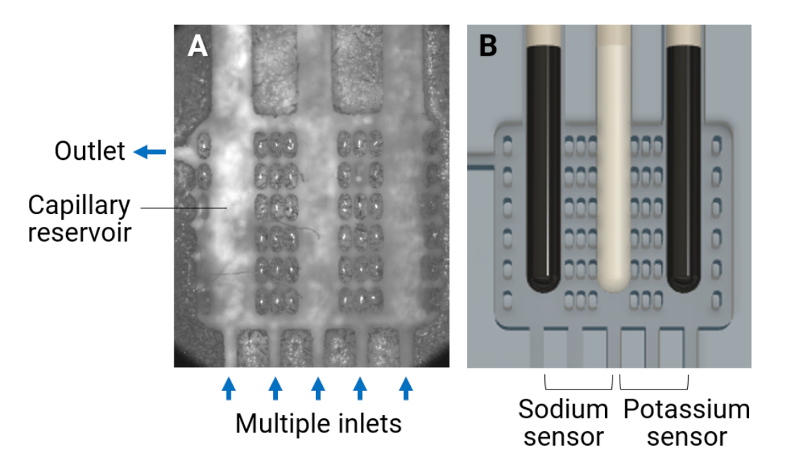Electrolyte monitoring is critical for care of infants in the intensive care unit to prevent deterioration of the infant’s condition. While regular blood draws can provide measurements of infant electrolytes, they only offer a view of ion concentrations at one point in time and are painful and potentially damaging to vulnerable blood vessels since they are not yet fully developed in infants. Current wearable monitoring devices are rigid and bulky and do not support natural saliva collection, making them ineffective for real-time, continuous monitoring of salivary electrolytes. A non-invasive, accurate, continuous monitoring device is needed.
Smart pacifier offers wireless, real-time, continuous detection of sodium and potassium levels without a blood draw
This low-profile, portable bioelectronic system integrates a microfluidic channel system, ion-selective sensors, flexible circuitry, and wireless Bluetooth signal into any commercially available pacifier to enable detection of ions in saliva in infants. The system requires no additional supporting components, and is designed for non-invasive, wireless, continuous, real-time, and easily assessable infant saliva diagnoses. An app sends a continuous data stream to a clinician’s phone or tablet, which can be accessed in real time or as a recording.
- Safe: The system is safely embedded inside the pacifier, with no direct contact with the infant.
- Non-invasive: This totally non-invasive monitoring pacifier eliminates the need for blood draws, which can only be done three times each day, and is designed to provide non-invasive neonatal health monitoring.
- Fast: Microfluidic channels are designed to efficiently pump optimum quantities and concentration of viscous saliva to the sensor area for quick measurement.
- Real time: Unlike blood draws that must be analyzed in a lab and give only a measurement for a point in time, this system is designed to continuously monitor sodium and potassium levels in saliva in real time.
- Supplies fresh saliva: The microfluidic channel continuously suctions saliva from the infant’s mouth, eliminating the need to induce salivary stimulation.
For the monitoring of infant salivary electrolytes in clinical and hospital settings, such as neonatal intensive care units.

A) The ion sensor is embedded into the channel, and the gap is filled between the channel and the electrodes with epoxy adhesive. (B) The channel structure is integrated on the inner wall of the pacifier with medical grade epoxy adhesive. A wireless circuit is mounted on the pacifier, while connecting the electrodes to the circuit.

Capillary reservoir and ion sensors are shown here in the microfluidic channels. (A) In this microscope image, the microfluidic channel has multiple inlets, an outlet, and a capillary reservoir. (B) A schematic illustration of the same channel site shows integrated ion sensors.

These photos of a pacifier show the location of the inlet hole and the outlet. The components susceptible to EO gas are integrated into the backside of the pre-sterilized pacifier.
